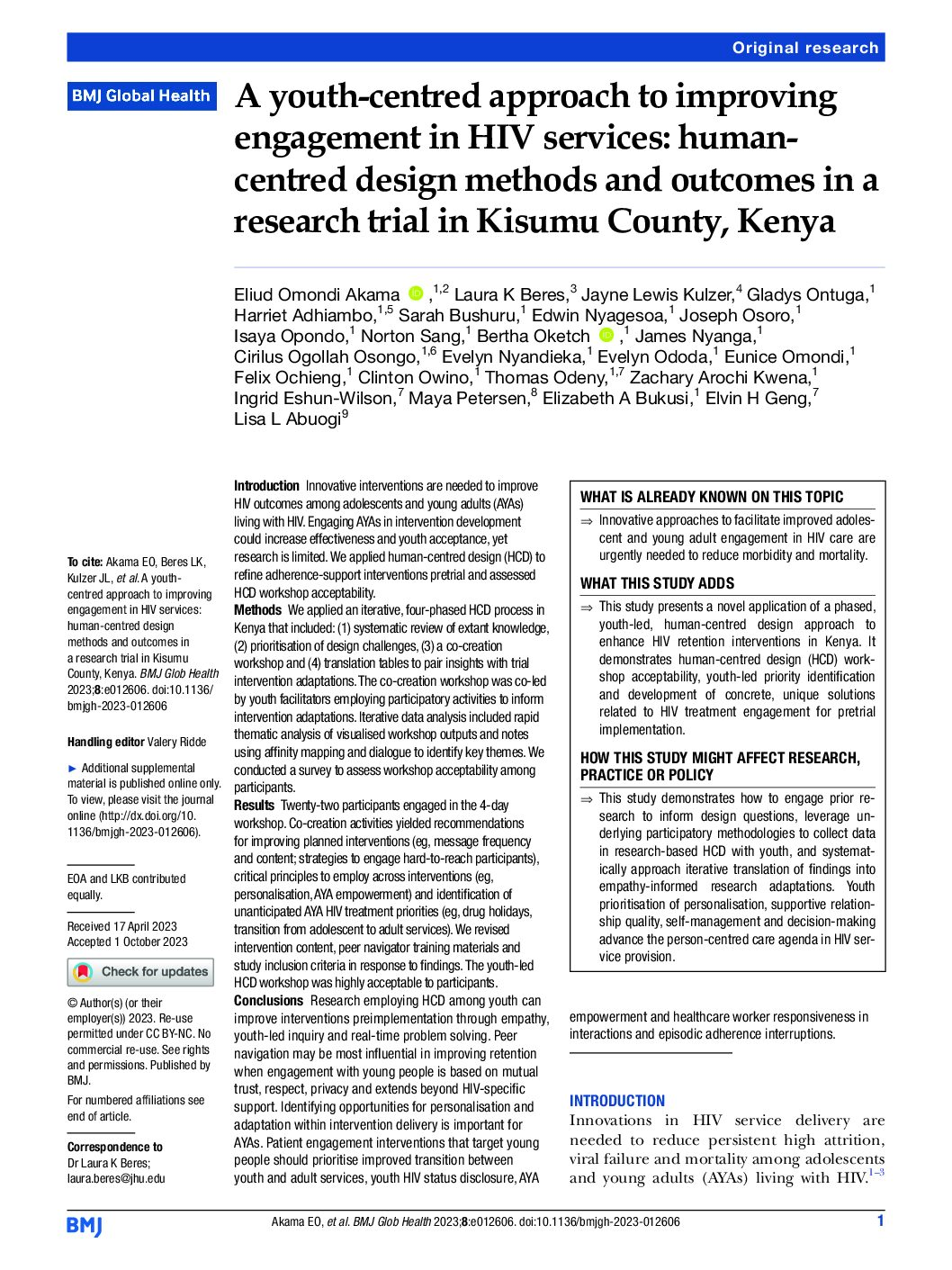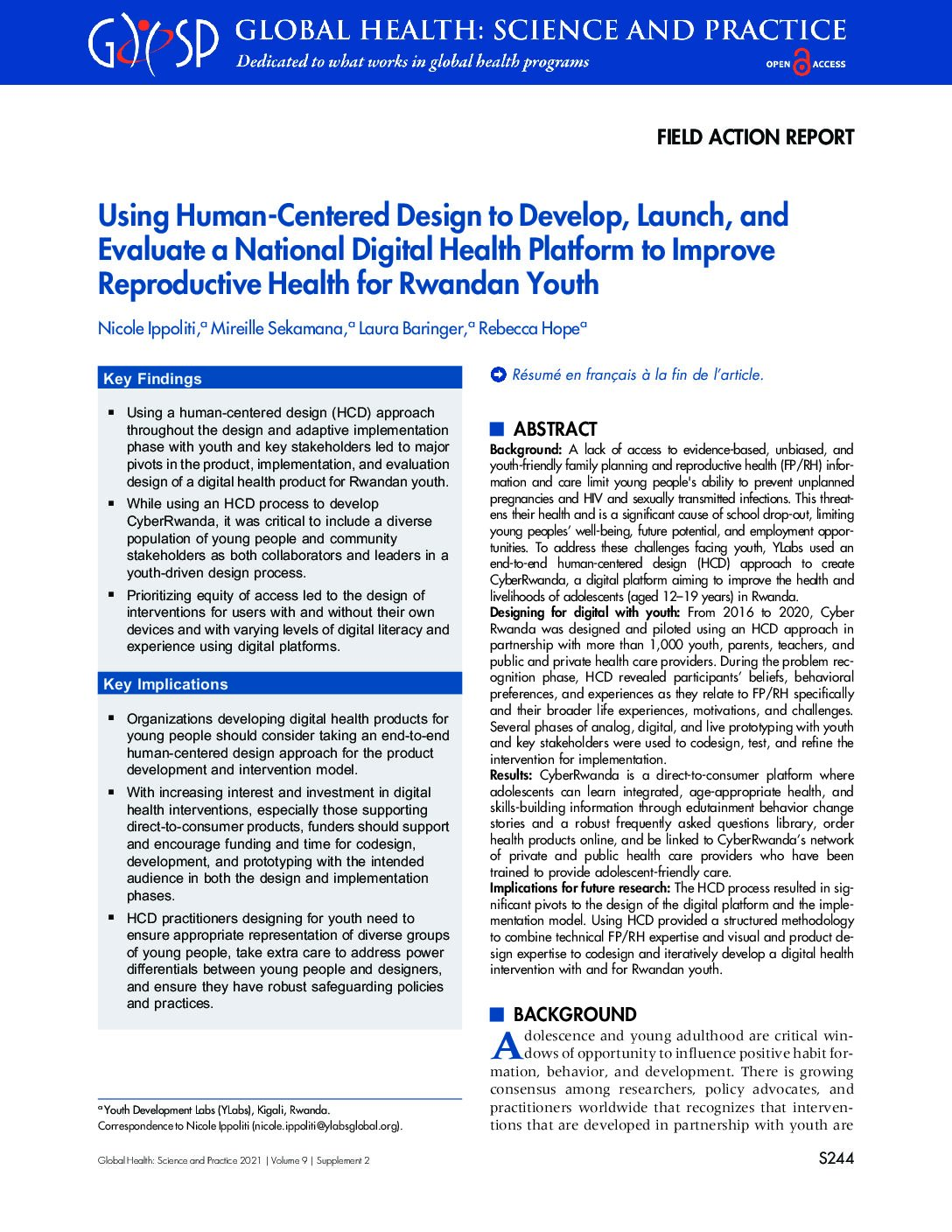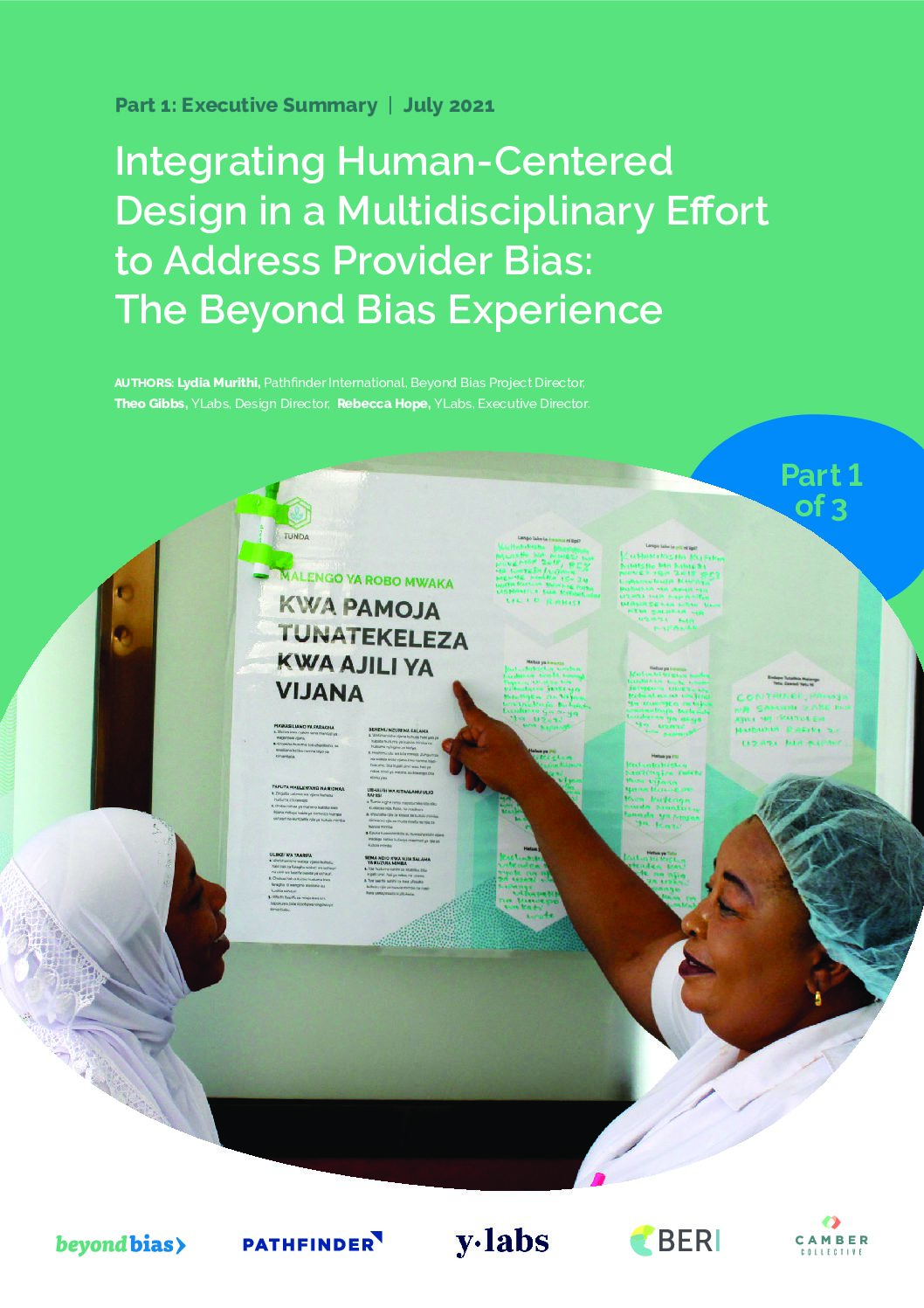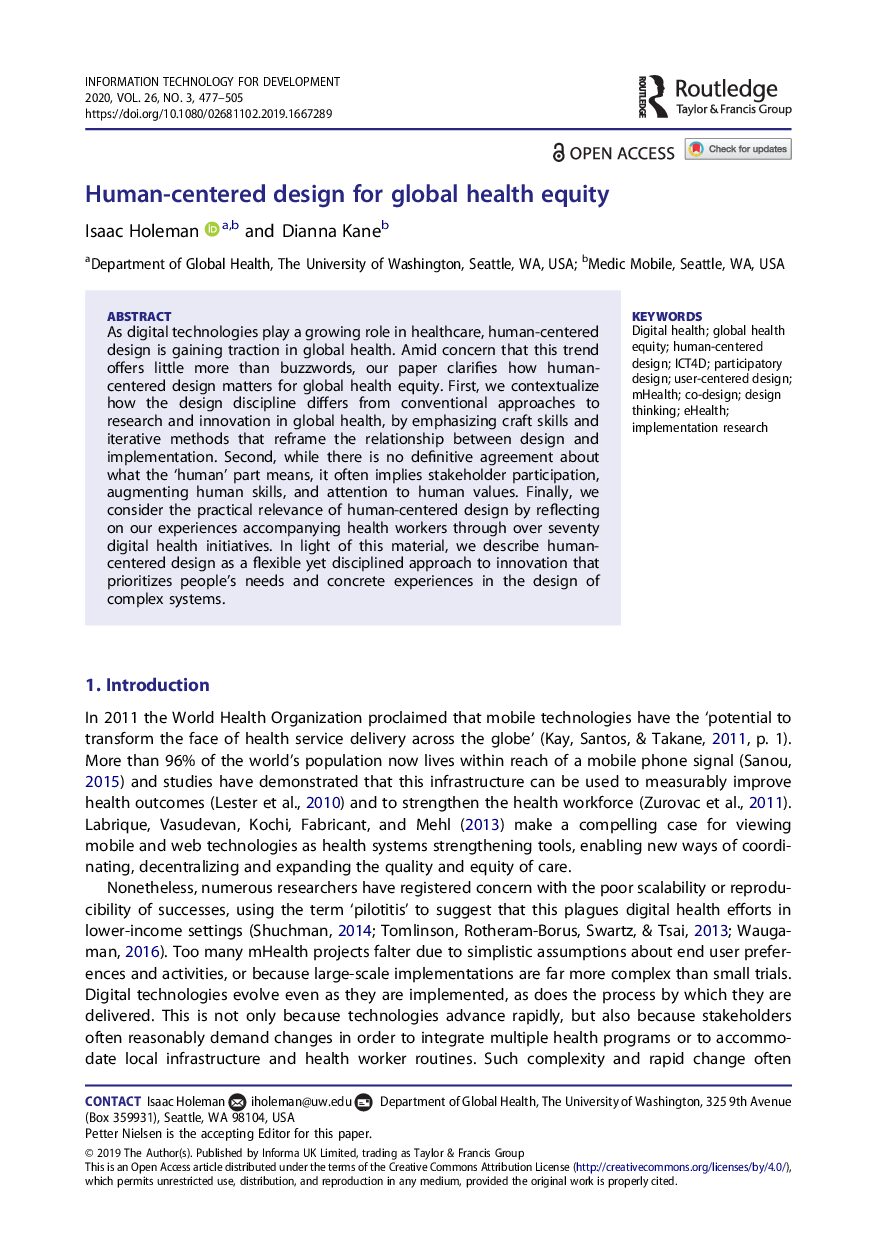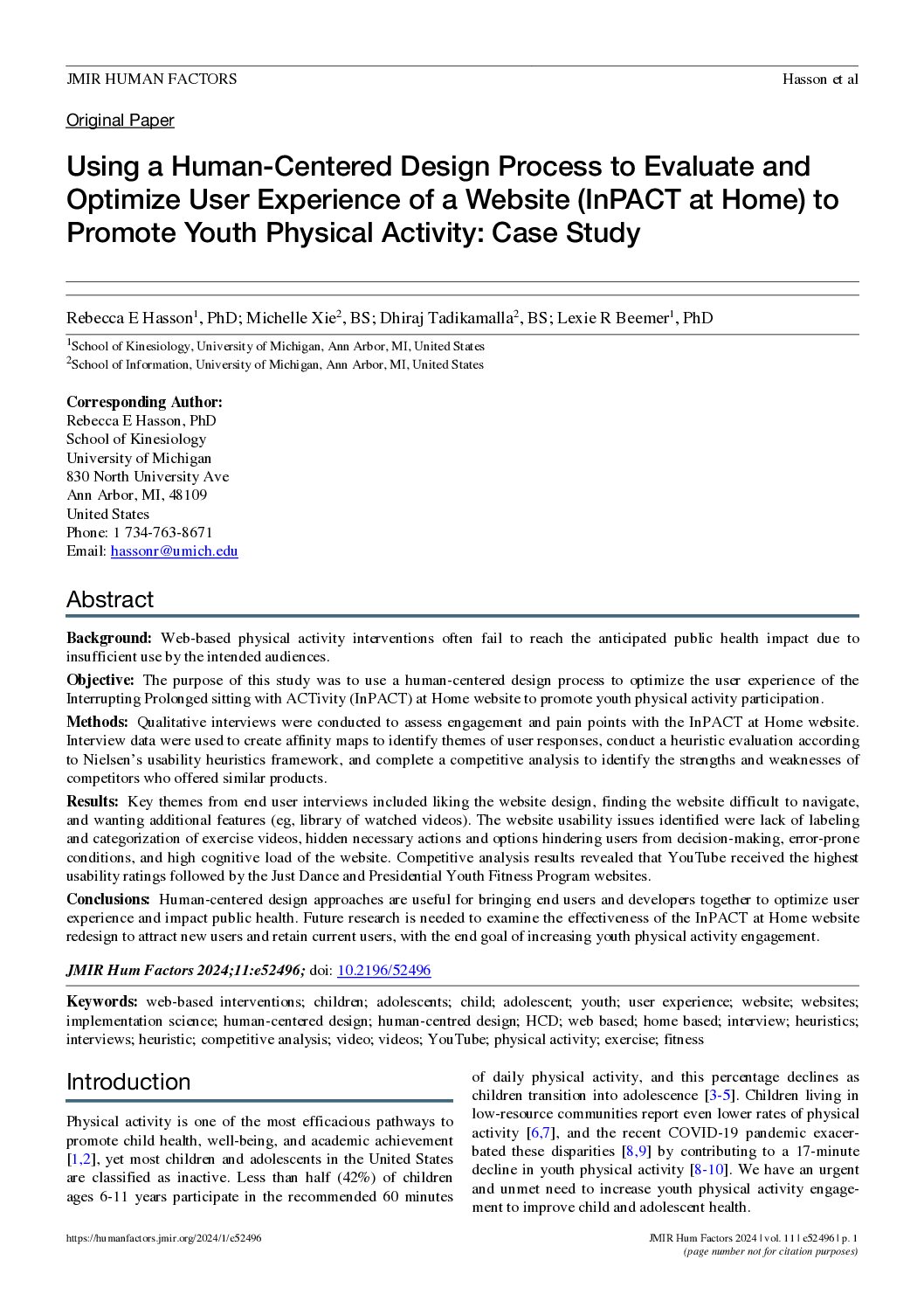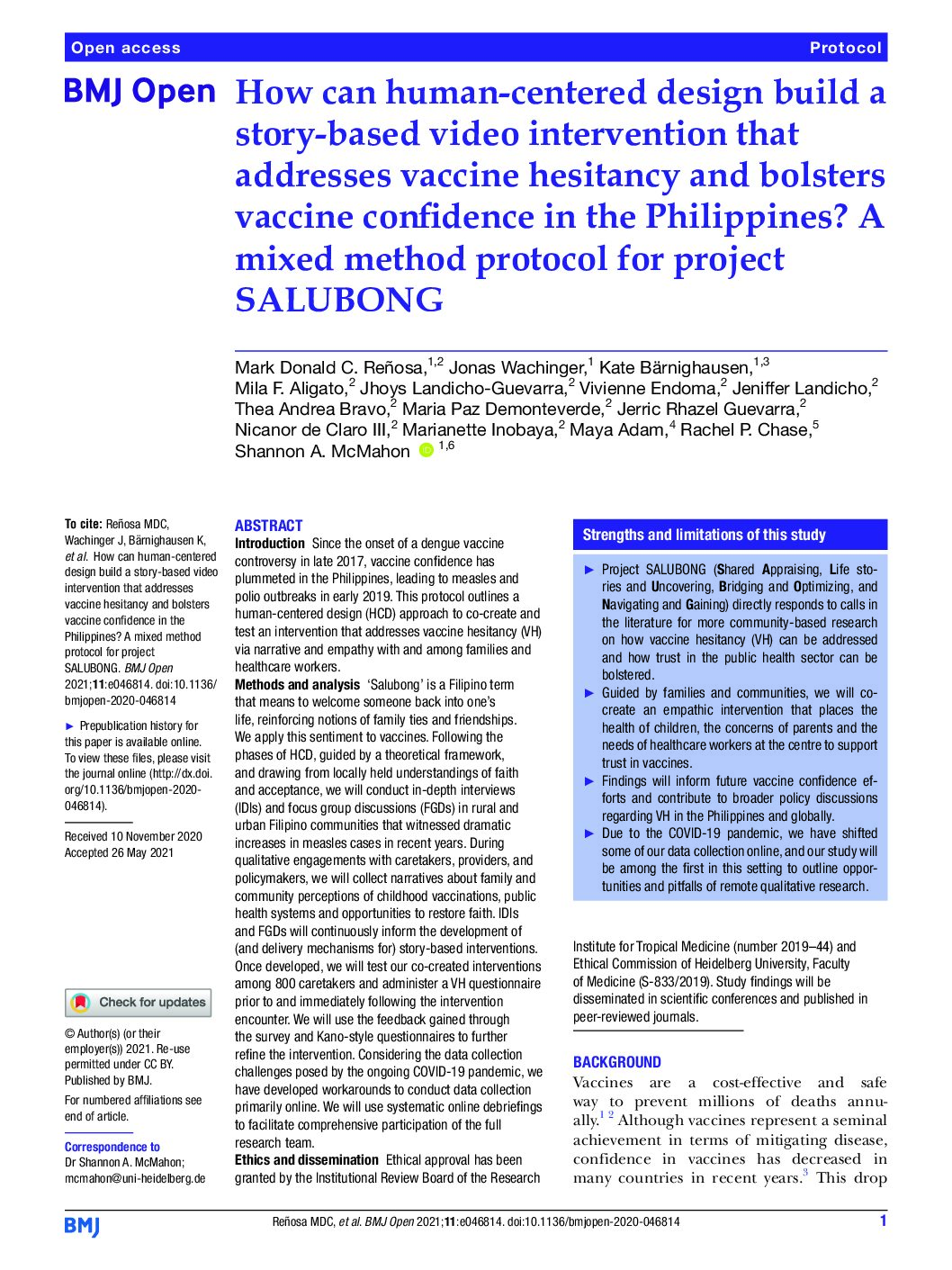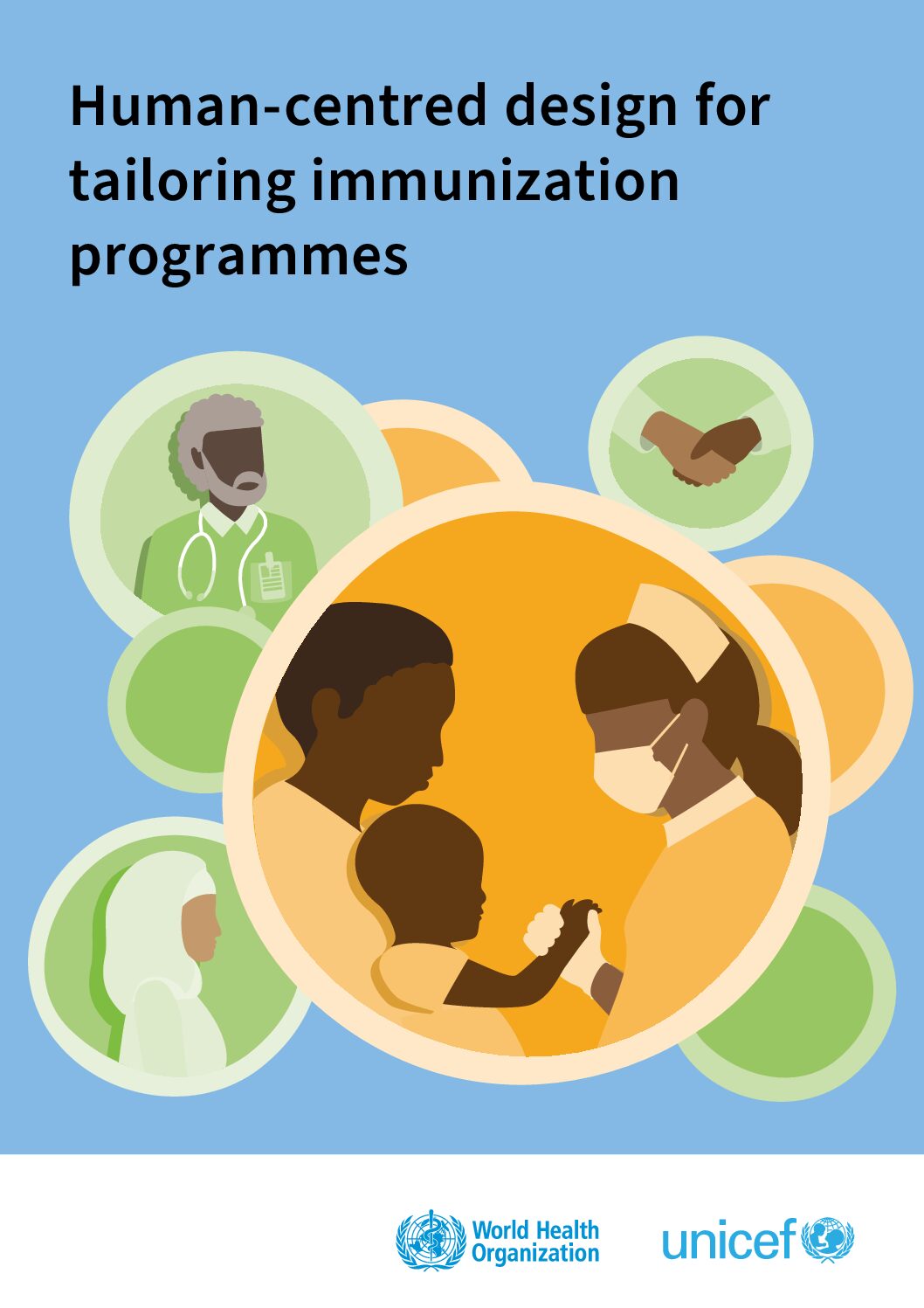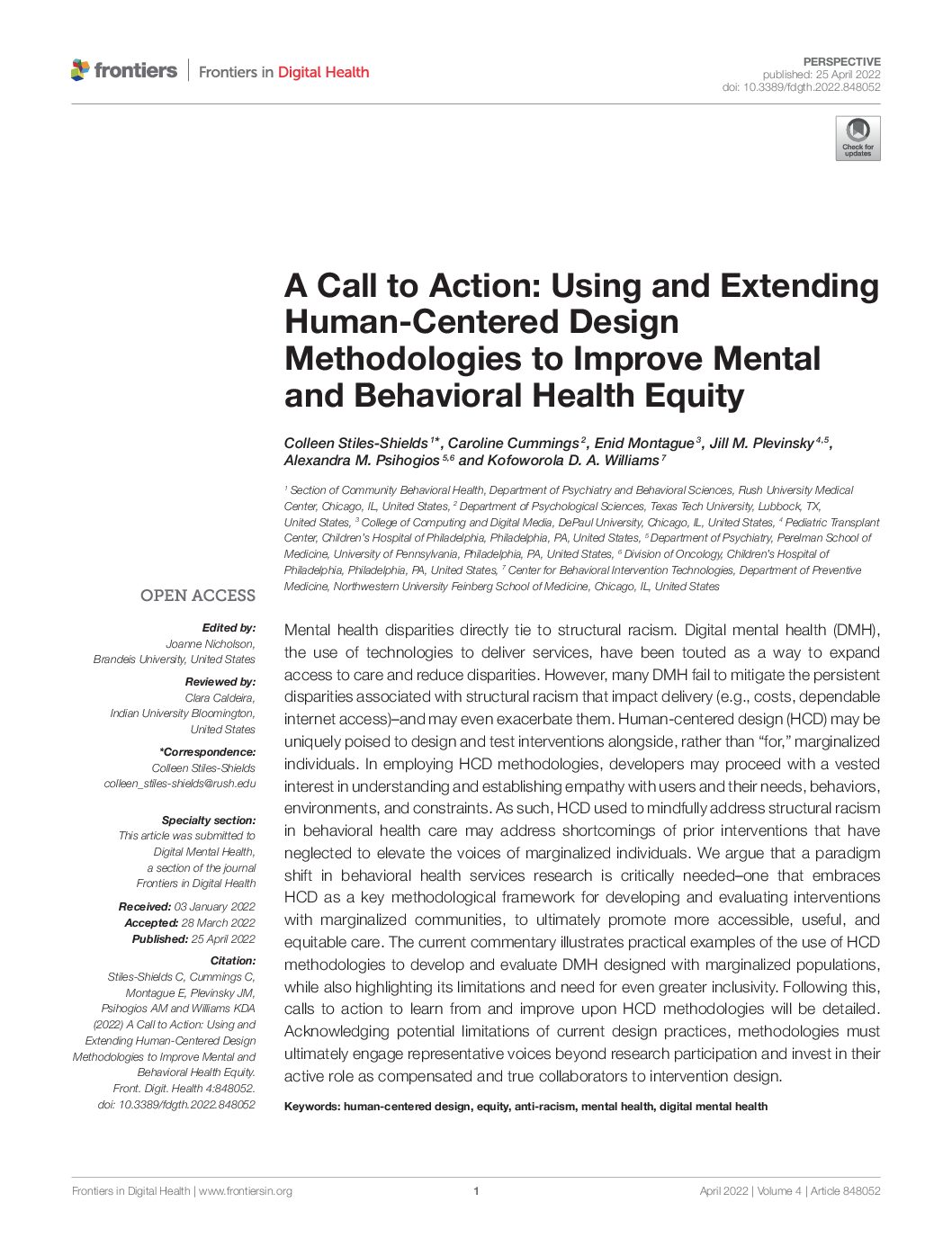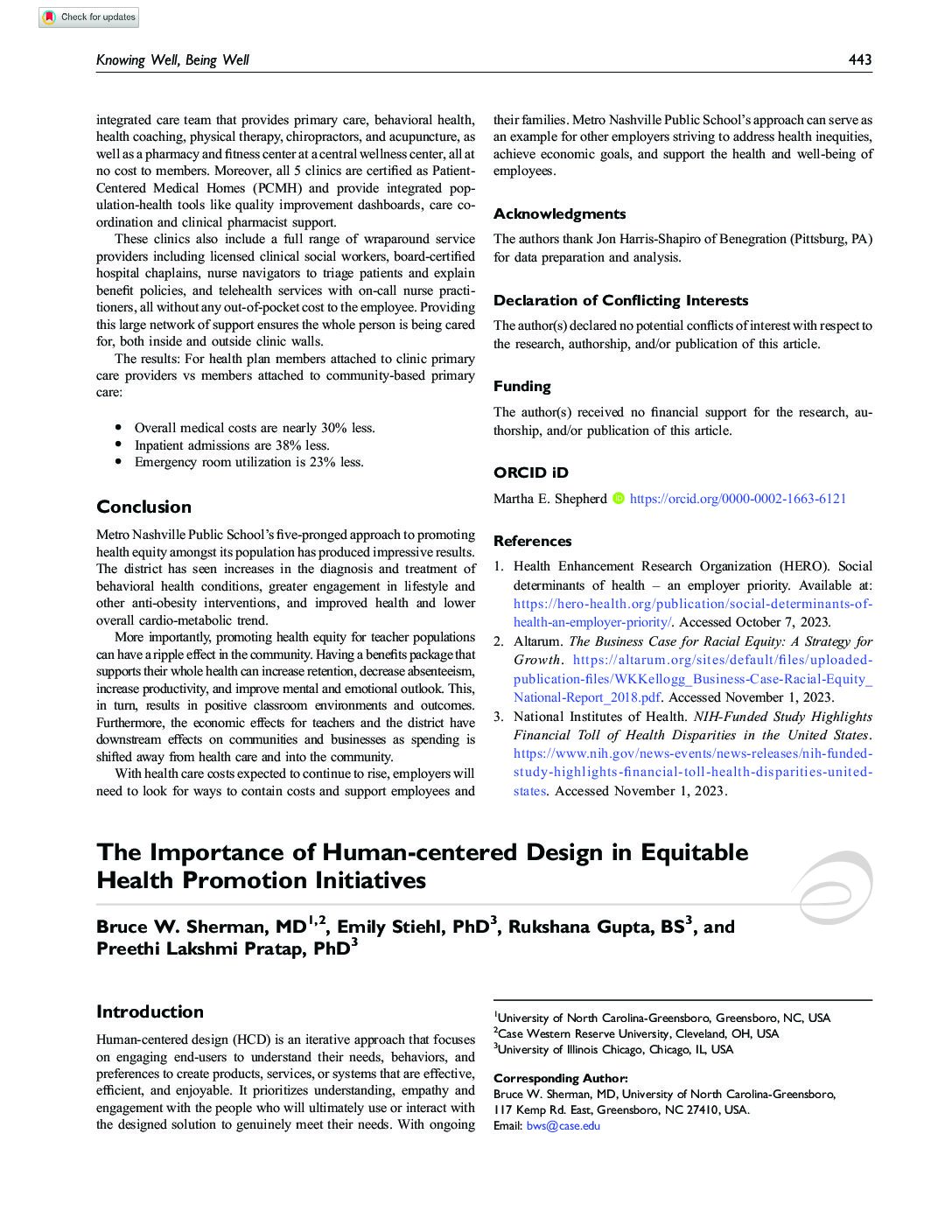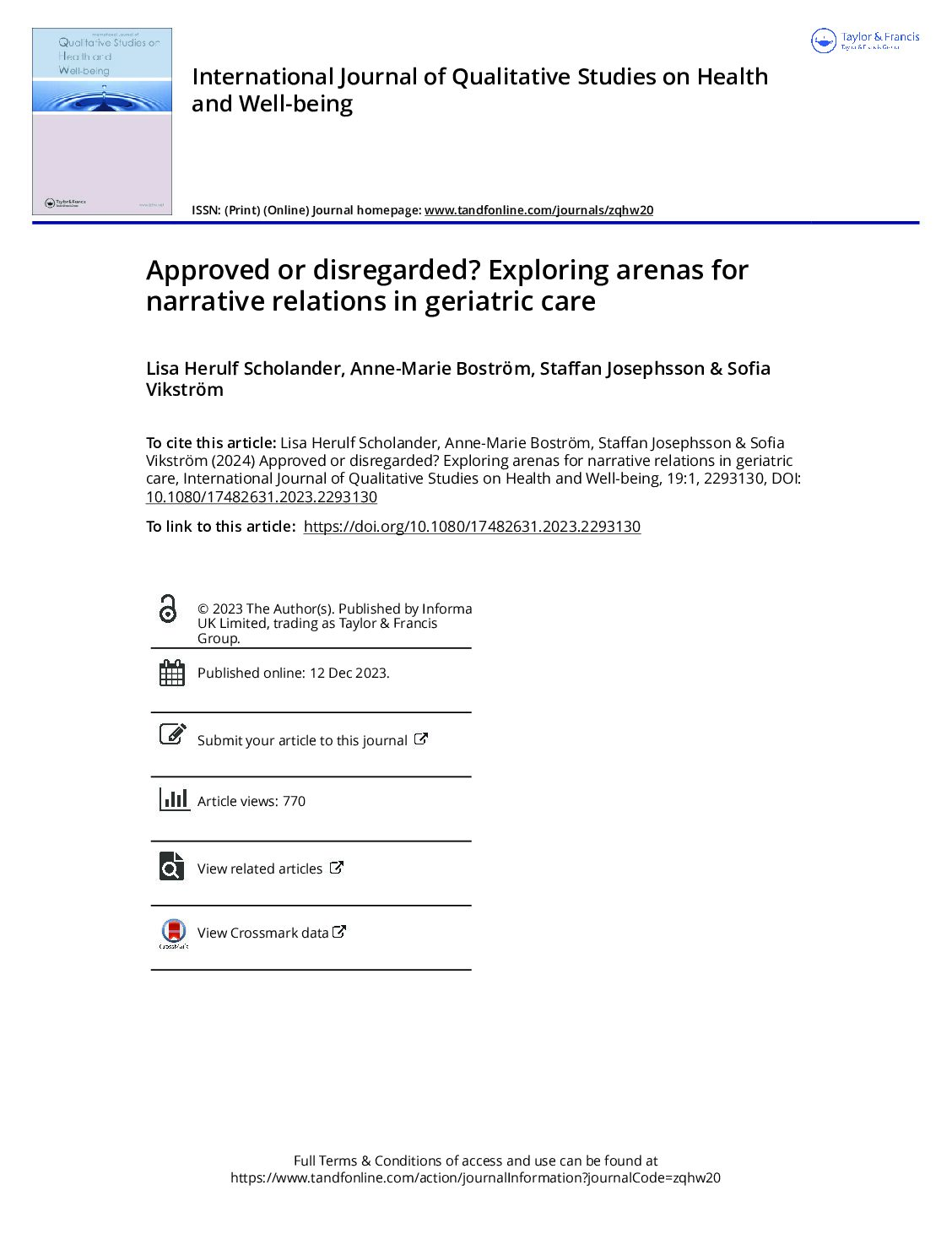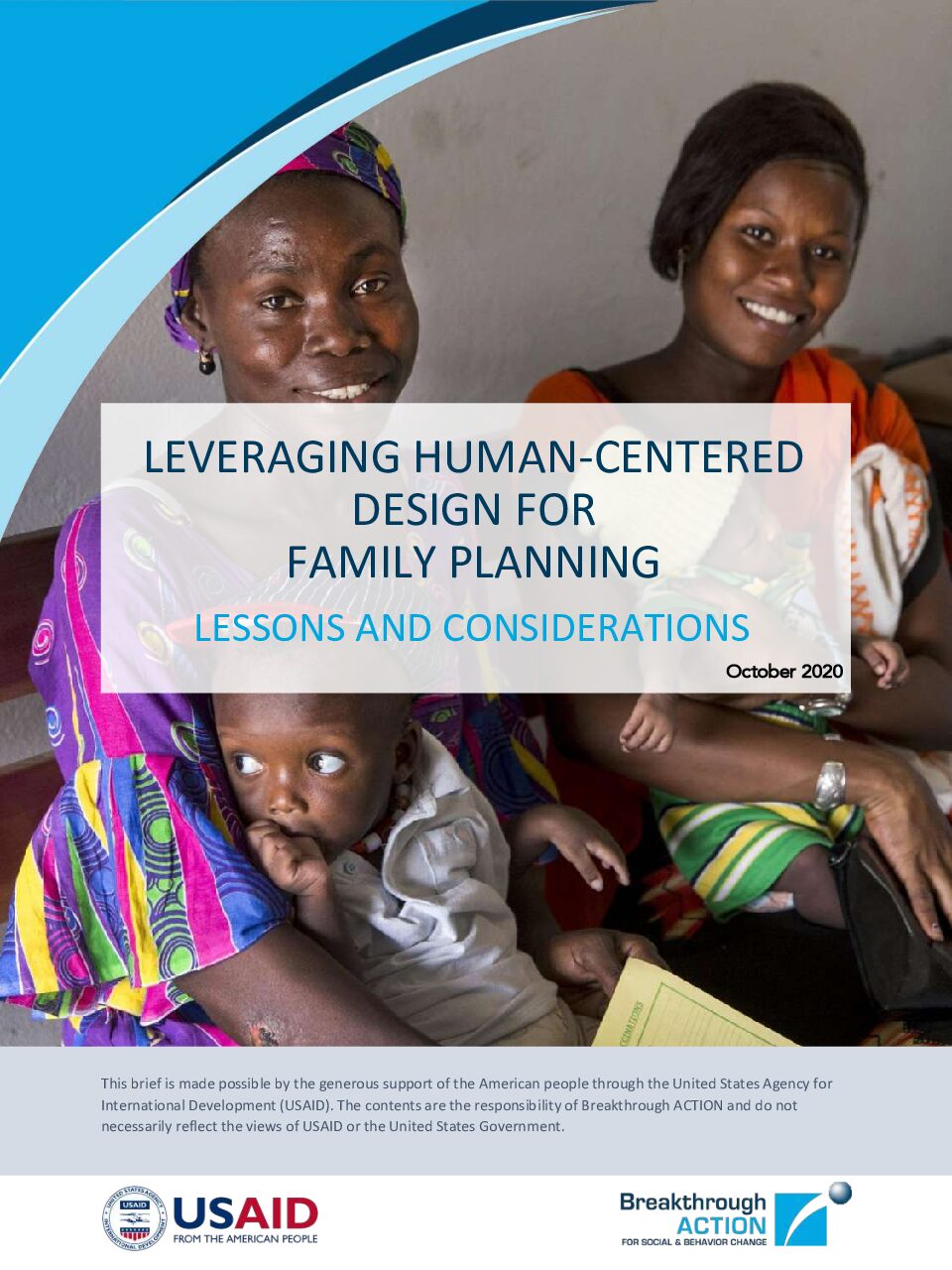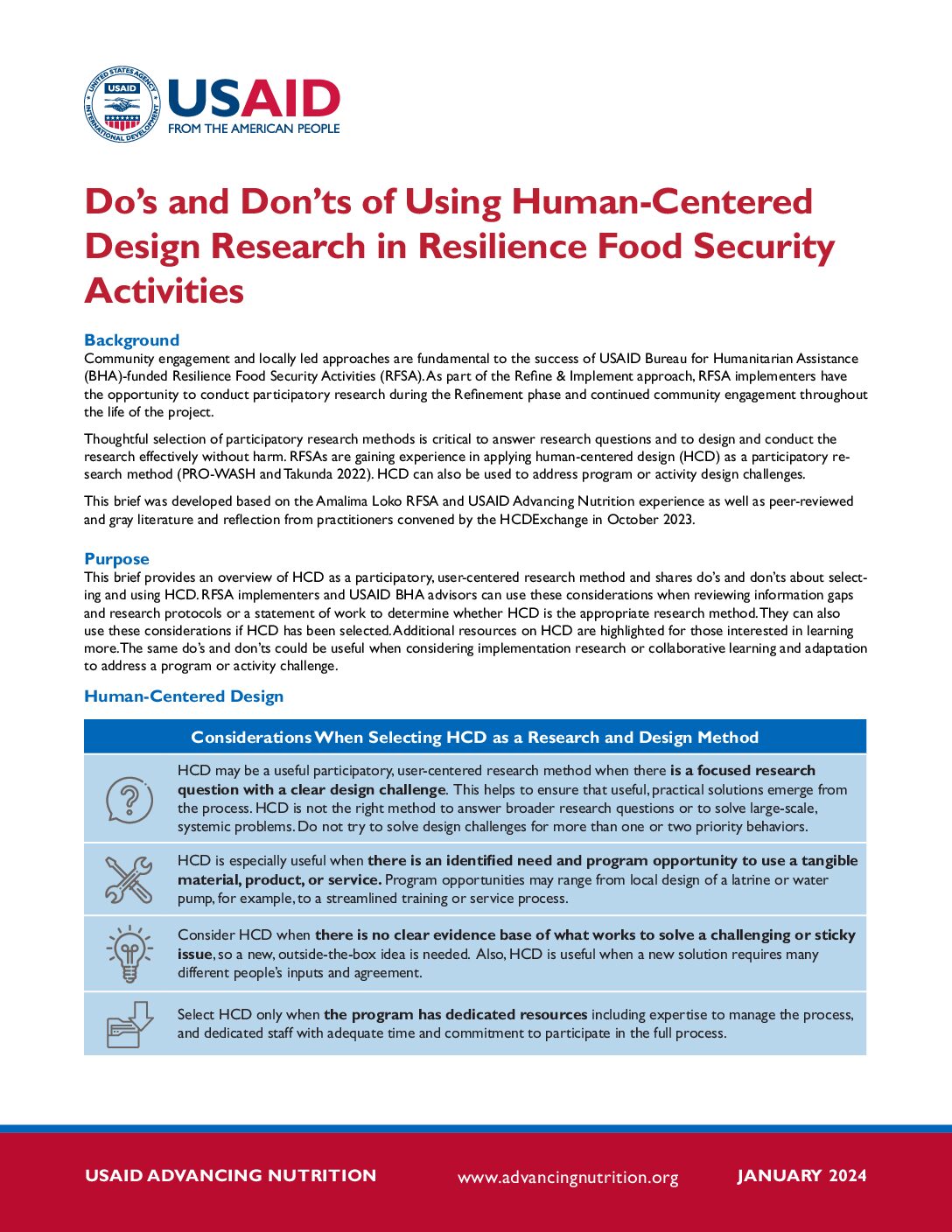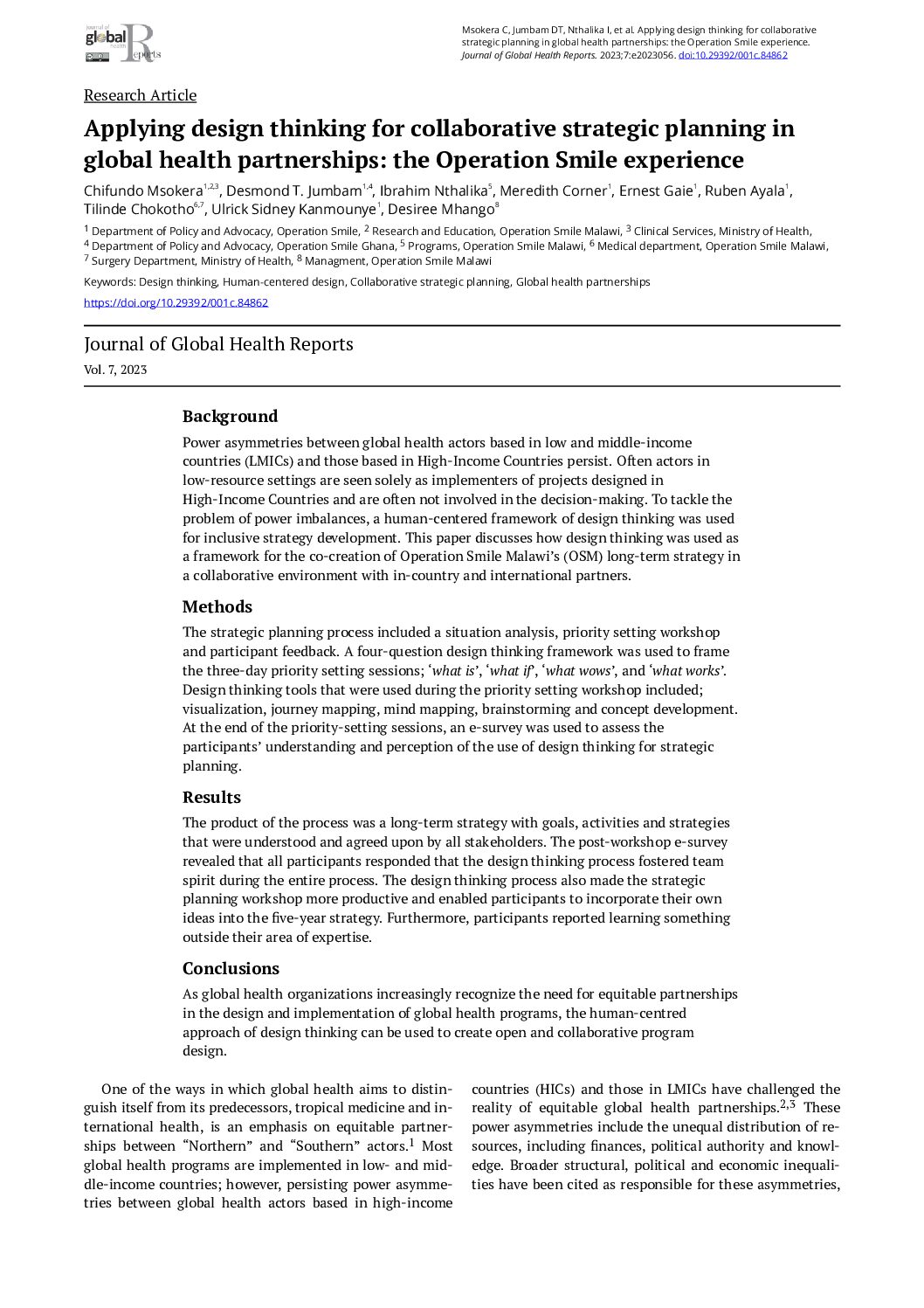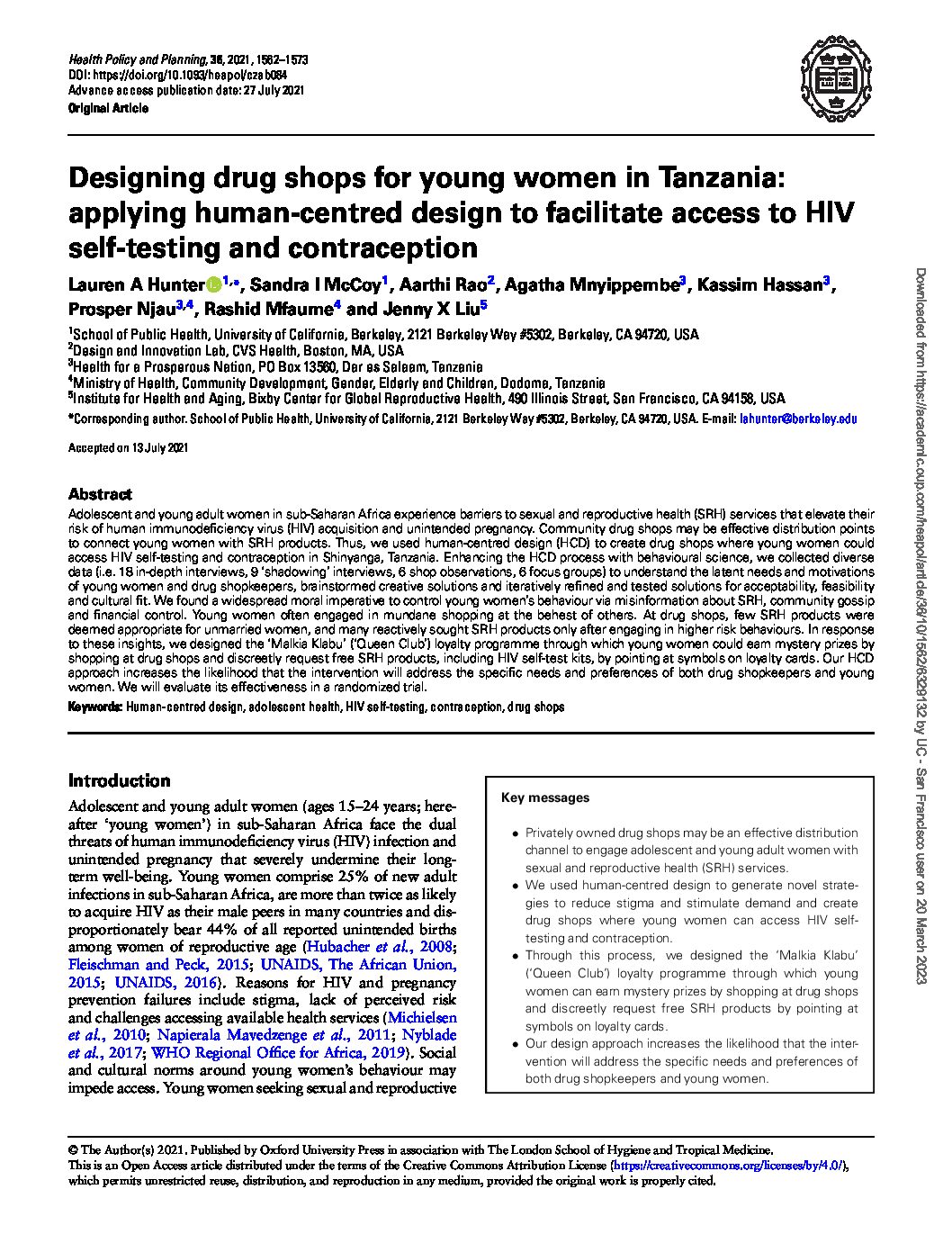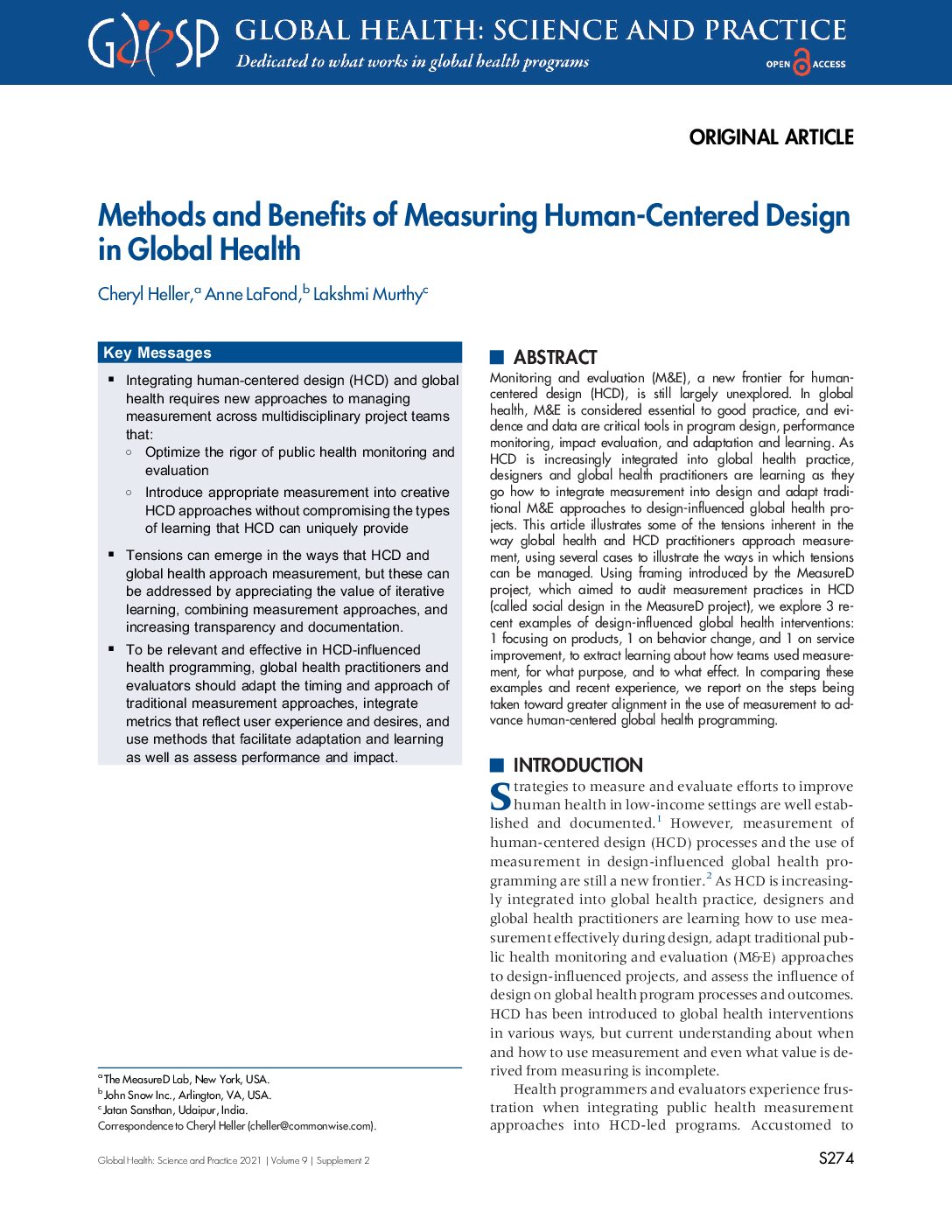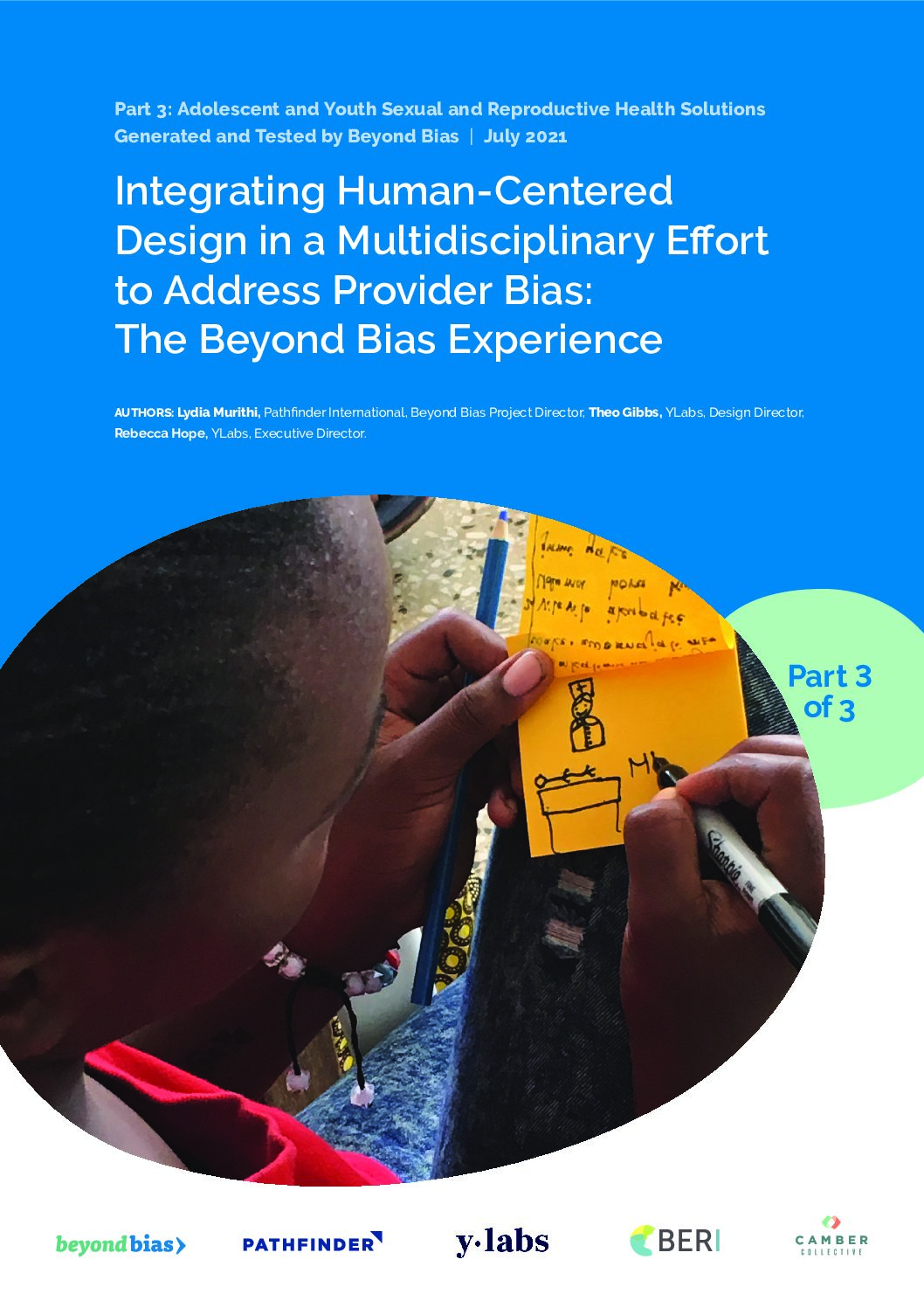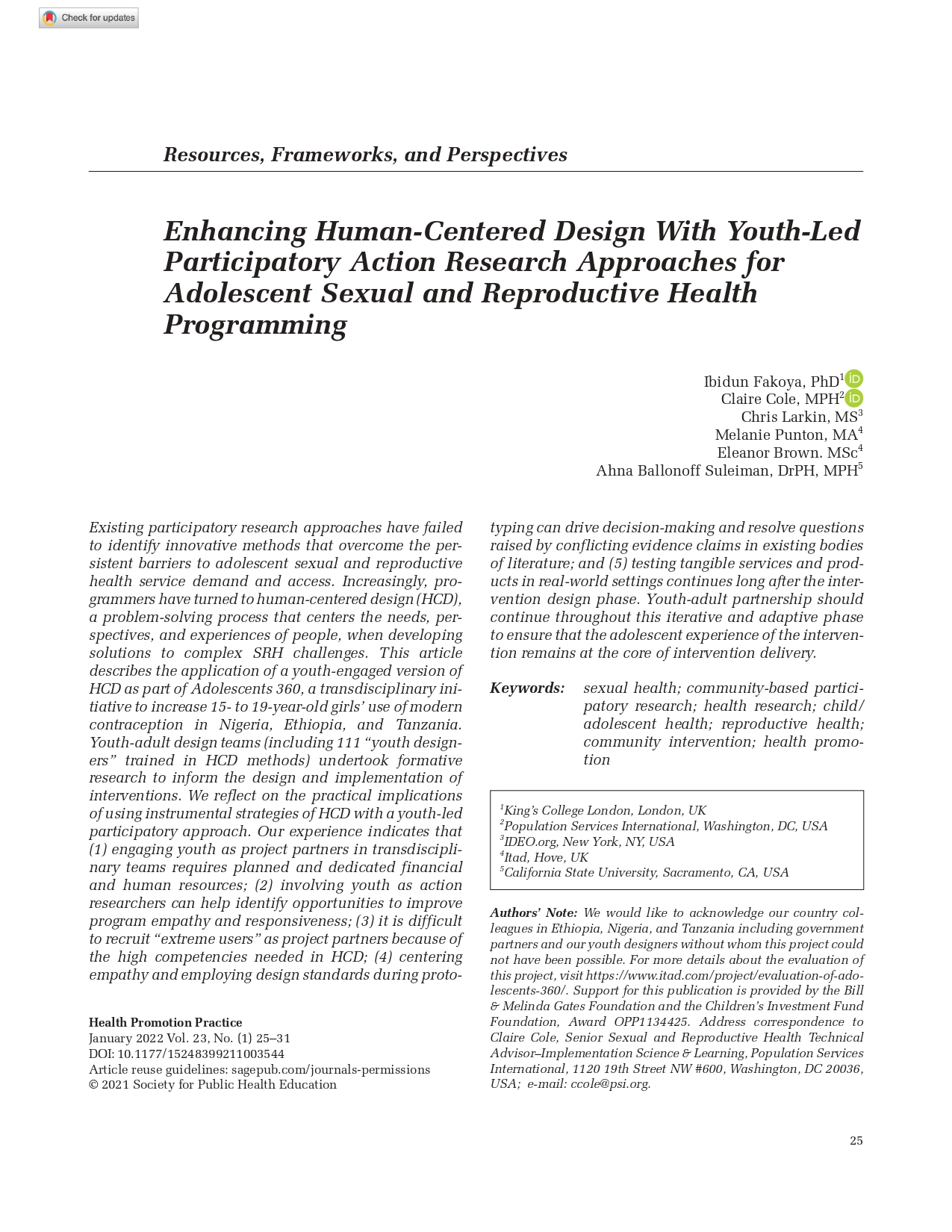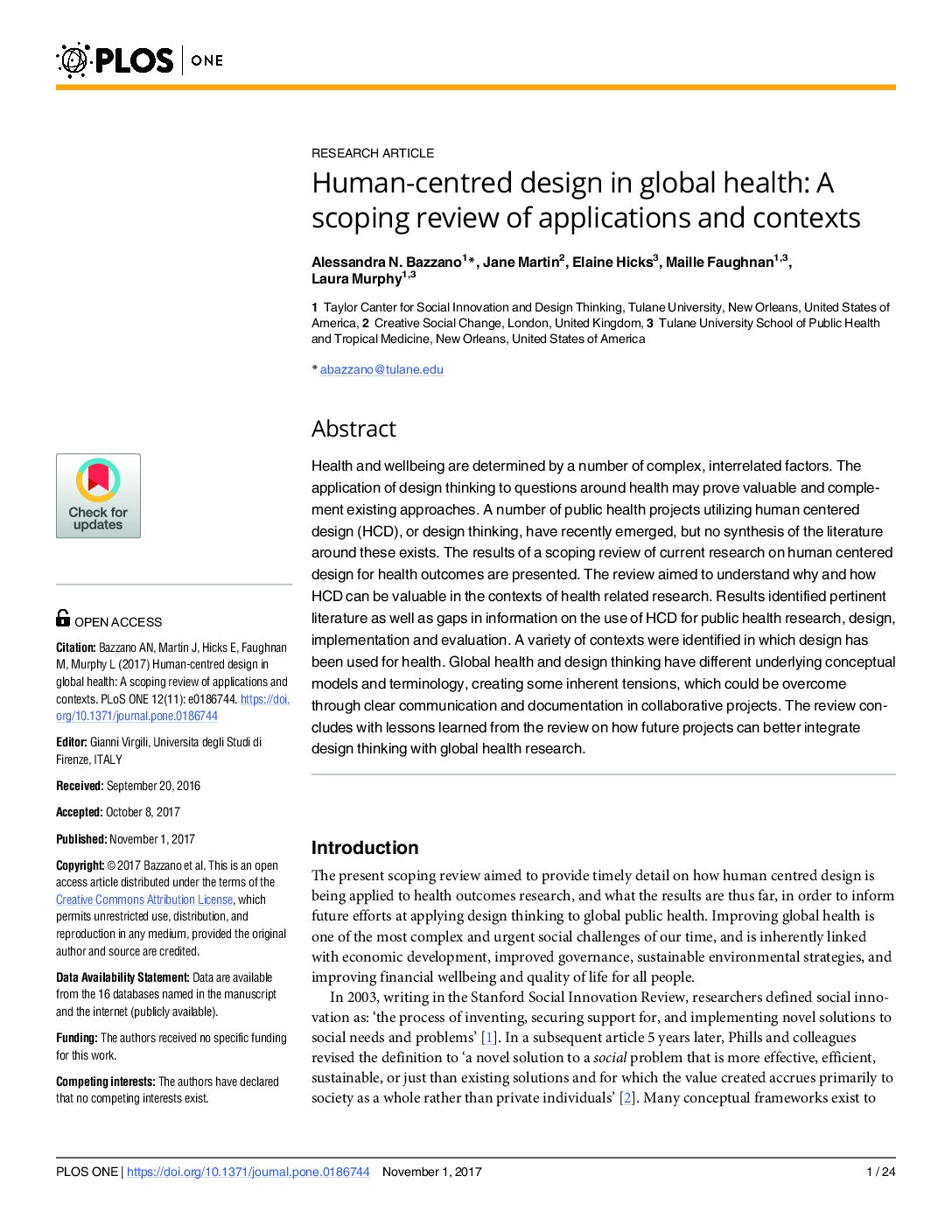Human-centered design is about understanding human needs and how design can respond to these needs. With its systemic humane approach and creativity, human-centered design can play an essential role in dealing with today’s care challenges. ‘Design’ refers to both the process of designing and the outcome of that process, which includes physical products, services, procedures, strategies, and policies. In this paper, we address the three key characteristics of human-centered design, focusing on its implementation in healthcare: (1) developing an understanding of people and their needs; (2) engaging stakeholders from early on and throughout the design process; (3) adopting a systems approach by systematically addressing interactions between the micro, meso and macro-levels of sociotechnical care systems, and the transition from individual interests to collective interests.
- HCDExchange
- 5
- Resource LIBRARY
- 5
- Innovating Health Care: Key Characteristics of Human-Centered Design


Innovating Health Care: Key Characteristics of Human-Centered Design
Publication Year: 2020
Contributing Organisation: International Journal for Quality in Health Care
Authors: Marijke Melles , Armagan Albayrak , Richard Goossens
Learning Themes: Global Health
Downloads:



